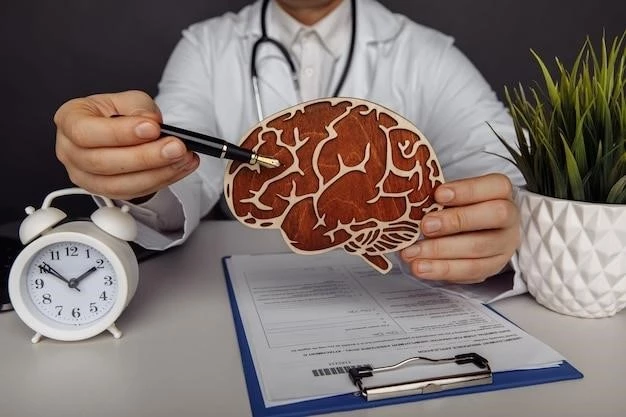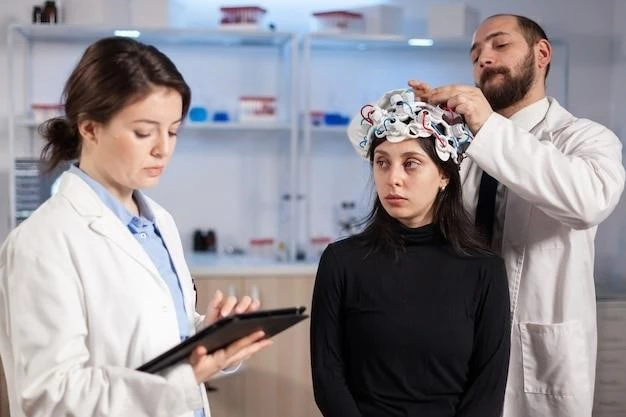Symptoms and Diagnosis of Cerebellar Ataxia
Cerebellar ataxia is characterized by symptoms such as coordination issues,
tremors, slurred speech, and difficulty with fine motor skills. Diagnosis
involves a detailed medical history, physical examination, neurological
tests, and imaging studies to assess the cerebellum.
Overview of Cerebellar Ataxia
Cerebellar ataxia is a neurological condition affecting the cerebellum, leading to coordination difficulties. It can result from various causes such as genetic mutations, stroke, or multiple sclerosis. This condition can significantly impact a person’s balance, speech, and overall quality of life.
Symptoms of Cerebellar Ataxia
The symptoms of cerebellar ataxia may include uncoordinated movement, balance problems, tremors, muscle weakness, and speech difficulties. Individuals with this condition often experience challenges with fine motor skills, such as writing or buttoning clothes, due to the cerebellum’s impaired function.
Diagnosis of Cerebellar Ataxia
Diagnosing cerebellar ataxia involves a thorough evaluation by a neurologist. This includes a detailed medical history, neurological examination, imaging tests like MRI or CT scans, and sometimes genetic testing. Identifying the underlying cause is crucial for determining the most appropriate treatment plan.

Treatment Options for Dominant Pure Cerebellar Ataxia
Effective treatment strategies for dominant pure cerebellar ataxia may involve medications, physical therapy, and surgical interventions.
Medication
Medication plays a crucial role in managing symptoms of dominant pure cerebellar ataxia. Drugs such as acetazolamide or 4-aminopyridine may be prescribed to improve symptoms like tremors٫ speech issues٫ and gait problems. It is essential to work closely with a healthcare provider to monitor medication effectiveness and potential side effects.
Physical Therapy
Physical therapy is a key component of the treatment plan for managing dominant pure cerebellar ataxia. Therapeutic exercises focus on improving coordination, balance, and muscle strength. A skilled physical therapist can tailor exercises to the individual’s specific needs, enhancing mobility and functional abilities;
Surgical Interventions
In cases where conservative treatments are ineffective, surgical interventions may be considered for dominant pure cerebellar ataxia. Procedures like deep brain stimulation or implantation of devices can help manage symptoms and improve quality of life for individuals with severe ataxia. Surgical options should be discussed in detail with a neurosurgeon.
Genetic Testing for Cerebellar Ataxia
Genetic testing is fundamental in diagnosing the specific type of cerebellar ataxia and guiding treatment decisions.
Importance of Genetic Testing
Genetic testing is crucial in understanding the underlying cause of cerebellar ataxia, allowing for personalized treatment strategies based on genetic mutations identified. It also helps in determining the likelihood of the condition being passed on to future generations and provides valuable insight for family planning and genetic counseling.
Procedure for Genetic Testing
The procedure for genetic testing in cerebellar ataxia involves a simple blood test or saliva sample. The sample is analyzed in a specialized genetics laboratory to identify specific genetic mutations associated with ataxia. Genetic counselors and healthcare providers play a key role in interpreting results and providing guidance on the implications of genetic findings.
Managing Balance Issues in Cerebellar Ataxia
Effective strategies to enhance balance in individuals with cerebellar ataxia.
Balance Training Exercises
Balance training exercises are crucial for improving stability and coordination in individuals with cerebellar ataxia. These exercises focus on strengthening core muscles, enhancing proprioception, and practicing dynamic balance movements. Work with a physiotherapist to develop a personalized balance exercise regimen tailored to individual needs and abilities.
Assistive Devices
Assistive devices such as canes, walkers, braces, and custom orthotics are beneficial for individuals with cerebellar ataxia to improve balance and mobility. These devices provide support, enhance stability, and reduce the risk of falls. Consult with a healthcare provider or occupational therapist to determine the most suitable assistive devices based on individual needs and functional abilities.
Research Advances in Dominant Pure Cerebellar Ataxia
Recent developments and breakthroughs in understanding and treating this condition.
Current Research Studies
Ongoing research studies are investigating new treatment approaches, potential genetic markers, and innovative therapies for dominant pure cerebellar ataxia. These studies aim to enhance understanding, improve management strategies, and ultimately enhance the quality of life for individuals affected by this condition.
Potential Future Treatments
Future treatments for dominant pure cerebellar ataxia may include gene therapies, stem cell research, and advanced pharmacological interventions. These innovative approaches hold promise for potentially slowing down disease progression, improving cerebellar function, and enhancing the overall well-being of individuals with ataxia.
Lifestyle Modifications for Cerebellar Ataxia Patients
Adapting daily routines and habits to improve quality of life for ataxia patients.
Diet and Nutrition
Optimizing diet and nutrition can support overall health and well-being in individuals with cerebellar ataxia. A balanced diet rich in nutrients, hydration, and regular meals can contribute to energy levels, muscle function, and overall vitality. Consult a healthcare professional or nutritionist for personalized dietary recommendations.
Adaptive Living Strategies
Implementing adaptive living strategies can help individuals with cerebellar ataxia navigate daily tasks more effectively. Simple modifications in the living environment, using assistive devices, scheduling activities strategically, and seeking occupational therapy can optimize independence and enhance quality of life for individuals managing ataxia.
Support Groups for Individuals with Cerebellar Ataxia
Connecting individuals affected by ataxia for mutual support and shared experiences.
Importance of Support Groups
Support groups offer emotional reassurance, practical advice, and social connections for individuals living with cerebellar ataxia. Sharing experiences, coping strategies, and information within a supportive community can help alleviate feelings of isolation, enhance well-being, and empower individuals to manage their condition more effectively.
Finding Local Support Groups
Locating local support groups for cerebellar ataxia patients can be done through healthcare facilities, online resources, or national ataxia organizations. Connecting with these groups allows individuals to access valuable resources, educational materials, and in-person or virtual meetings for emotional support and practical guidance in managing their condition.
Impact of Cerebellar Ataxia on Daily Life
Understanding how ataxia affects daily activities, mobility, and emotional well-being.
Challenges Faced by Individuals
Individuals with cerebellar ataxia encounter difficulties in coordination, balance, speech, fine motor skills, and activities of daily living. Coping with these challenges requires resilience, adaptability, and support from healthcare providers, family, and community resources to maintain independence and quality of life.
Coping Strategies
Coping with cerebellar ataxia involves learning adaptive techniques, focusing on strengths, utilizing assistive devices, practicing stress-reducing activities, and seeking emotional support from loved ones and support groups. Developing a positive mindset and proactive approach can help individuals manage the challenges of ataxia and maintain a fulfilling lifestyle despite the condition.
